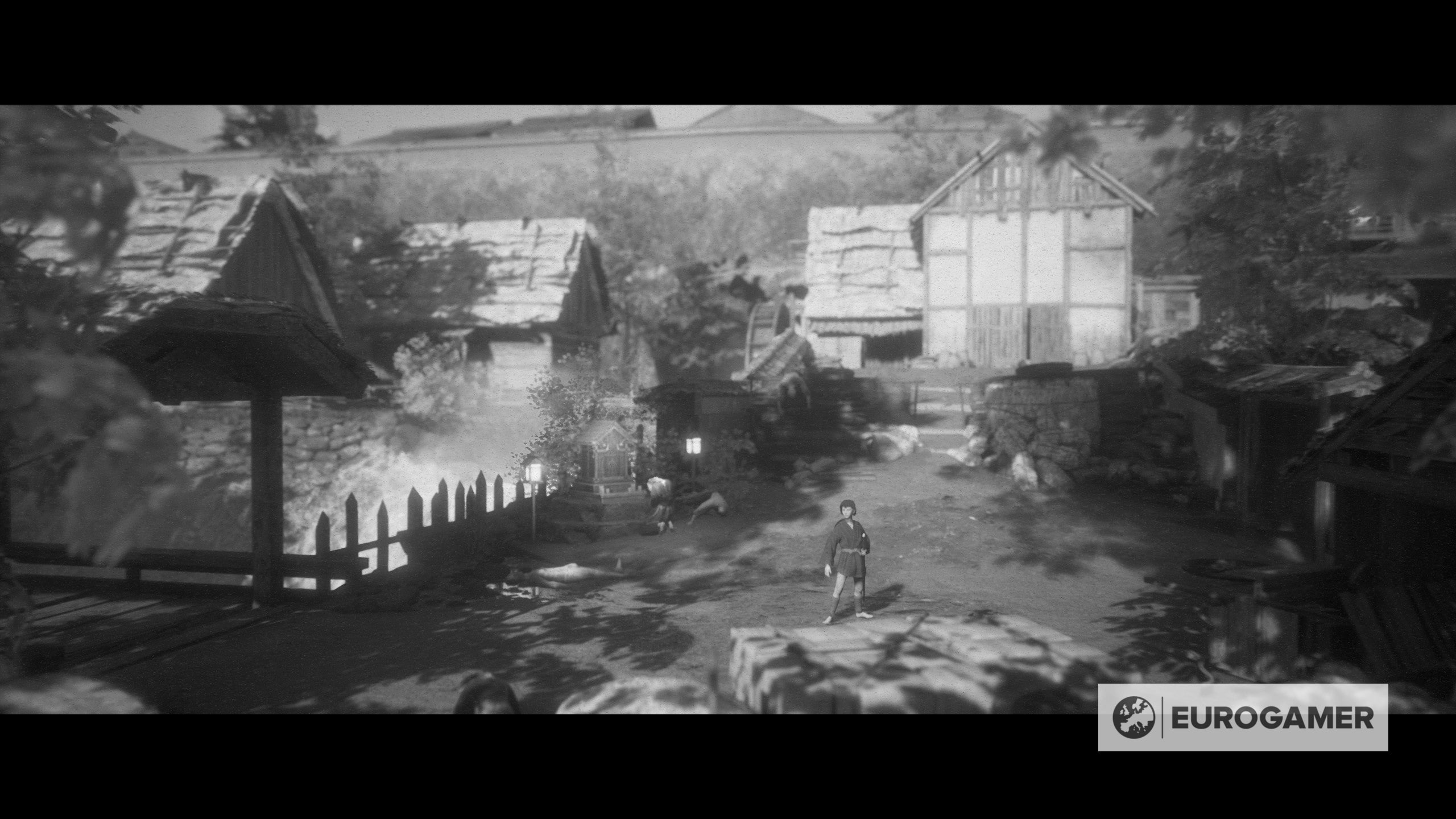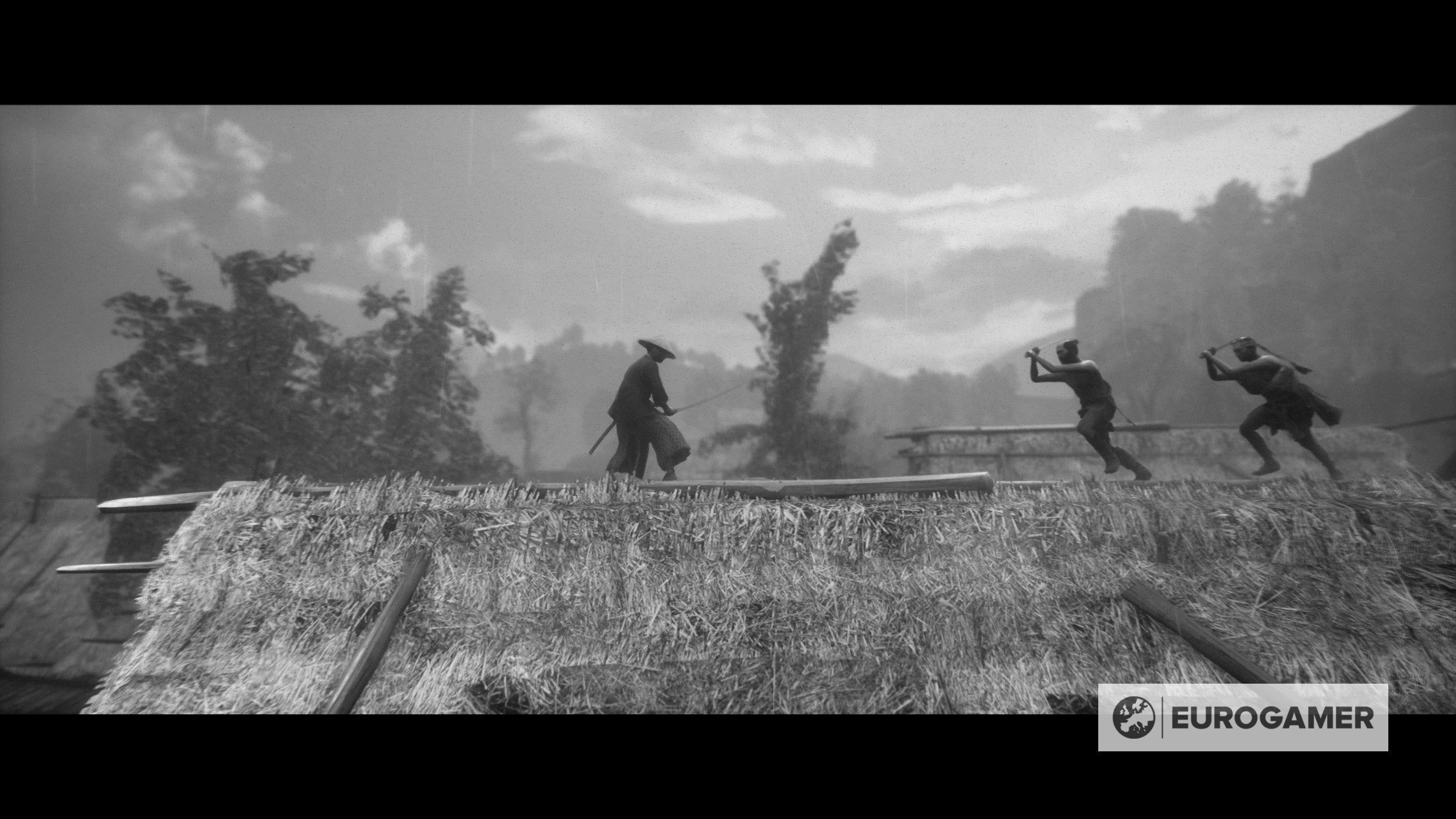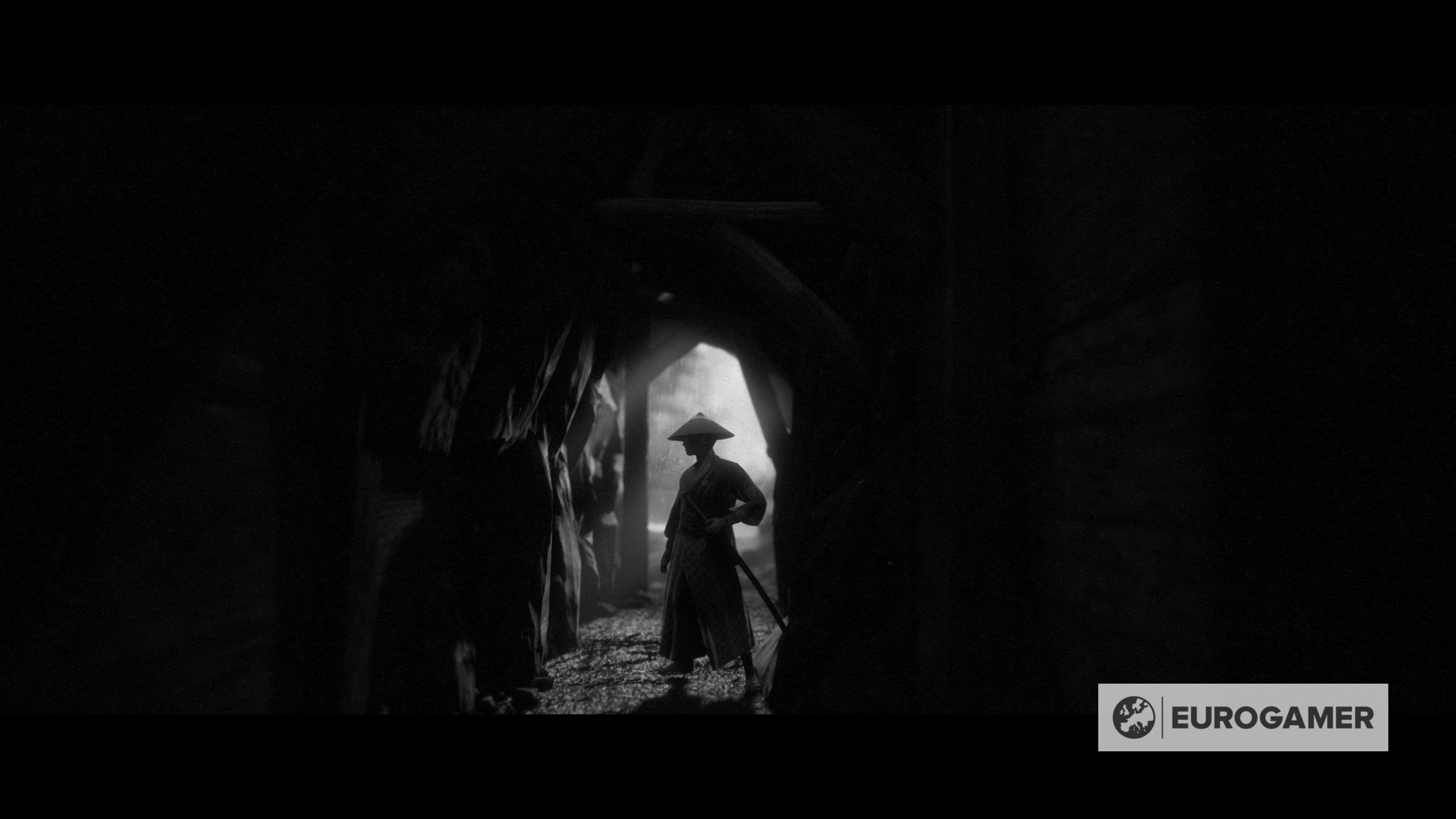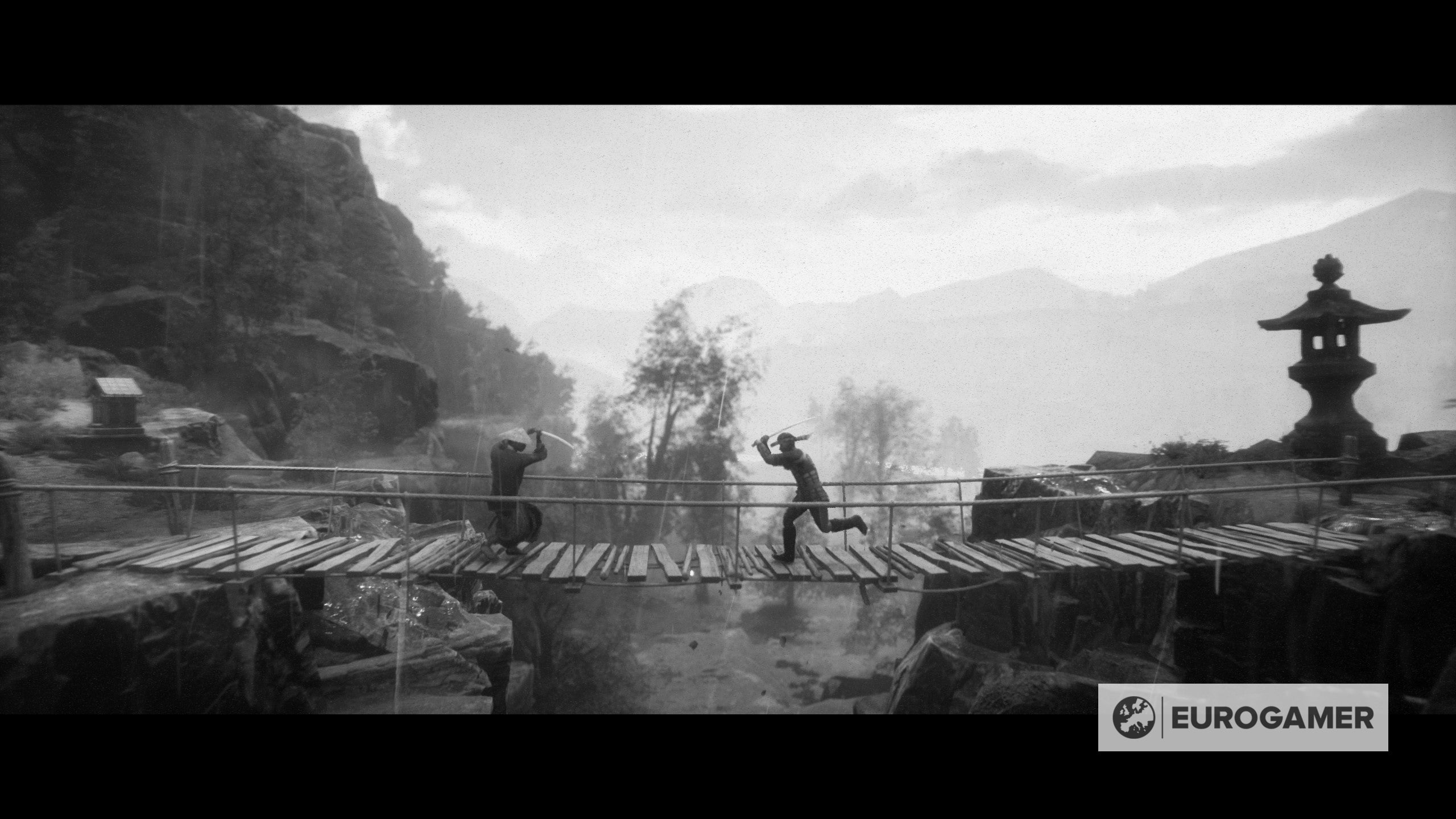Trek to Yomi is made by Shadow Warrior studio Flying Wild Hog and published by Devolver - two of the reasons it stood out last summer in an E3 showcase. It’s a 2.5D platform-combat game that follows the tired trope of lone-wolf samurai trying to save his and other villages from bad, invading samurai (or pretenders to the samurai tradition, he’d probably say). This begins with you as a boy, training with your sensei, when suddenly your village is attacked and your sensei called to defend - and you disobey his orders to stay where you are and rush to his aid. This takes you out of the carefree hubbub of the settlement into the bandit-ravaged village beyond, where people are screaming in anguish in the streets. And it’s here you get your first real taste of combat in the game. Combat is, perhaps obviously, core to the game. It’s presented side-on, so you can only move forwards and backwards, and you face enemies either alone or in groups of three or more. Occasionally, there’s a boss encounter thrown in. Success usually depends on timing rather than wild swinging - something a stamina gauge limits you from doing. Time a parry well and it slows time and opens an enemy for a counter-attack. Things get more complicated as enemies get more complicated, and as enemies begin to attack from the front and rear, but you unlock new moves and combos to deal with them. It’s quite fun. I like the zip with which the sword moves and many of the animations are well observed. And there’s a nice slow-mo moment and sense of satisfaction in bringing enemies down, with one or two quick flashes of your sword. But Trek to Yomi struggles to develop much beyond that. Even as more complex enemies appear, the sword play stays largely the same - regresses, even, as there often isn’t time for the fancier combo moves in higher-stakes battles. It leaves showdowns in Trek to Yomi feeling a bit dumb. You can feel the game trying to play them up, in the way they’re staged and shot from some admittedly quirky angles, but there’s rarely much to them or much difference between them. I don’t feel any of the sophistication of a samurai’s martial art, and some annoyingly tedious sections of trash enemies exacerbate this. It’s a shame because I want to like Trek to Yomi. There are nice touches here. I like how you explore the burning or ravaged villages from various eye-catching angles, nosing into buildings for unexpected duels, or onto rooftops for showdowns there. And I like its pretensions to a kind of samurai experience I’ve got a soft spot for. But nowhere does it ever seem to realise them, and the problem is that everywhere I’m reminded of it. There’s a chance that the full game will deepen and address some of these concerns, particularly where fight sophistication is concerned, and I hope it will. But as it stands, it’s a case of style lacking substance, and it’s underwhelming.



